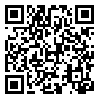BibTeX | RIS | EndNote | Medlars | ProCite | Reference Manager | RefWorks
Send citation to:
URL: http://sjsph.tums.ac.ir/article-1-5292-en.html
2- PhD, MPH. Department of Health education and promotion, School of Public health, Tehran University of Medical Sciences, Tehran, Iran
3- MD. Assistant Professor, Shahid Hashemi Nejad, Department of Cardiology, School of Medicine, Iran University of Medical Sciences, Tehran, Iran
4- Ph.D. Associate Professor, Department of Health education and promotion, School of Public health, Tehran University of Medical Sciences, Tehran, Iran ,
5- Ph.D. Professor, Department of Biostatistics, School of Public Health, Tehran University of Medical Sciences, Tehran, Iran
Background and Aim: Overcoming barriers of living with type-2 diabetes mellitus is a challenge in line with empowering patients for a well-managed life. This study was conducted to determine the effect of an educational intervention based on the BASNEF model on the living barriers among type-2 diabetes patients and factors affecting it.
Materials and Methods: This study, conducted in 2014, was a quasi-experimental intervention including a total of 90 type-2 diabetes patients under coverage of South of Tehran Health Centers, randomly divided, after a pre-test, into 2 groups ─ an experimental and a control (comparison) group. Based on the information obtained through the pre-test, a one-month education was imparted at the experimental group in 6 sessions the control group received no education. The educational contents included, based on the BASNEF model constructs, diabetes as a disease and its cardiovascular complications, healthy nutrition, physical activity, methods of self-monitoring blood glucose control, and ways of communication with the health personnel and physicians.
Results: The findings showed significant differences between the mean scores of constructs of the BASNEF model (beliefs, attitudes, subjective norm, enabling factors) and constructs of barriers of living with diabetes (diagnosis, treatment, self-monitoring, communication with health professionals) in both the experimental and control groups before and after the intervention (p<0.0001).
Conclusion: The findings of this study show the necessity of educating type-2 diabetes patients aiming at reducing barriers to living with the disease. The BASNEF model is one of the applicable theories that can be used to this end.
Received: 2015/12/13 | Accepted: 2015/12/13 | Published: 2015/12/13
| Rights and permissions | |
 |
This work is licensed under a Creative Commons Attribution-NonCommercial 4.0 International License. |





